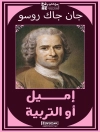Child-centered lesson planning can have a daily positive impact on your time and energy and on the quality of children’s learning and engagement—but it takes organization and a toolbox full of strategies and ideas.
Whether you are just beginning your career in early childhood education or have many years of experience in the classroom, this book helps you to assess where you are and what you are doing and provides you with tips and resources to inspire creative, developmentally appropriate teaching approaches.
In each chapter, you’ll find
- Real-life examples showing what is possible when teachers work together to enrich and personalize teaching.
- Links to early learning guidelines and standards to maximize planning and communication Ideas for dramatic play themes that relate to daily life, families, cultures, and communities
- Strategies to infuse rich vocabulary experiences that scaffold language development, support executive function skills, and strengthen self-regulation
- Tips to help you evaluate and adapt spaces and materials to address physical needs
- Examples for how to support dual language learners
- Ways to integrate family engagement as a strength and asset for development and learning
Book Features
The following features invite you to dig deeper and apply what you read to your own setting:
- Daily teaching scenarios. The illustrated classroom examples show teaching in action and represent a variety of pre-K settings and situations. Here, you will see the principles and strategies presented in practical and useful ways.
- Tips for Teaching. This feature details practical skills to maximize your effectiveness in meeting children’s learning and social needs. You will find ideas for preparation, observation, materials, vocabulary, supporting learning, encouraging children’s choices, and making the most of teaching moments.
- Research Connections. Each chapter introduces easy-to-relate research links between children’s development and the activities and interactions that will strengthen emerging skills. These take-away anchors will ensure you know the latest information you need.
- Individualized Teaching. This section will connect the development of children to their relationships with families, communities, and culture. You will find information about facilitating learning for children who are learning multiple languages.
- Balance Points. This feature includes needed behavior supports for self-regulation, strategies to promote executive function, and mediation for stress and trauma.
- Ready Resources. Sources for digging deeper are provided for early screening, adaptation for special needs, technical assistance networks, state early guidelines, creative activities, national organizations, and professional development opportunities.
- Helpful Hints: Quick tips provide pointers to make lesson planning work for you.
- Links to NAEYC Program Accreditation Standards and Assessment Items. This feature anchors curriculum planning, effective teaching, assessment, and family engagement to professional guidelines and high-quality practices.
- Sample lesson plans. Examples with explanatory captions and comments show how to plan a schedule, play areas, prop boxes, book lists and themes, and detailed teaching plans with extensions for playful learning with individualized supports.
- Chapter reflection questions. Practical applications at the end of each chapter will inspire your growth and may be used for personal or group study.
Зміст
Introduction
Chapter 1: Setting a Foundation for Teaching
- Celebrating How Children Learn
- Tips for Teaching: Learning by Observing
- Helping Children Thrive with Developmentally Appropriate Practice
- Balance Points: Using Reflective Practice
- Connecting Teaching to Children’s Lives
- Individualized Teaching: Using a Strengths-Based Approach
- Ready Resources: Exploring Your Community Context
- Understanding the Role of Play in Development
- Teaching with Children in Mind
- Helpful Hint: Following the Children’s Lead
- Research Connections: Strategies for Inclusion
- Exploring Elements of Child-Centered Teaching
- Sample Lesson Plans: Planning a Child-Centered Daily Schedule
- Links to NAEYC Early Learning Program Accreditation Standards and Assessment Items
- Reflection Questions
Chapter 2: Making Lesson Planning Work for You
- Engaging Children in Active Learning
- Balance Points: Positive Communication with Children
- Planning a Variety of Teaching Contexts
- Tips for Teaching: Creating a Rich Context for Learning
- Individualized Teaching: Planning Personal Conversation
- Exploring Levels of Support in Child-Centered Teaching
- Ready Resources: Exploring Emergent Curriculum
- Tips for Teaching: Effective Strategies to Support Child-Centered Learning
- Helpful Hint: Adding Teaching Strategies to Lesson Planning
- Being Consistent While Staying Flexible
- Tips for Teaching: Getting Organized and Staying Inspired
- Research Connections: Increasing Opportunities for Learning
- Helpful Hint: Planning Materials for Play
- Sample Lesson Plans: Planning Thematic Play Experiences
- Links to NAEYC Early Learning Program Accreditation Standards and Assessment Items
- Reflection Questions
Chapter 3: Preparing Child-Centered Themes and Play Areas
- Identifying Learning Goals for Play
- Recognizing Interdependence Among Areas of Development and Learning
- Supporting Emerging Skills and Dispositions
- Ready Resources: Exploring Standards and Early Learning Guidelines
- Digging Deeper with Content Skills for Child-Centered Teaching
- Helpful Hint: Considering the What, How, and Where of Play Areas
- Research Connections: Creating Active Learners
- Fostering Language Development During Play
- Tips for Teaching: Maximizing Language Support
- Helpful Hint: Making Play More Complex
- Balance Points: Planning Effective Behavior Guidance During Play
- Providing a Rich Context for Multilingual Learning
- Ready Resources: Strategies for Multilingual Learners
- Using Individualized Support
- Tips for Teaching: Supporting Children with Special Needs
- Ready Resources: Key Components of Inclusive Programs
- Sample Lesson Plans: Connecting Learning Across Content Areas
- Sample Book Lists: Aiming for Big Ideas and Concepts
- Links to NAEYC Early Learning Program Accreditation Standards and Assessment Items
- Reflection Questions
>Chapter 4: Planning Teacher-Directed Activities
- Introducing New Information
- Tips for Teaching: Connecting to Children’s Daily Lives
- Engaging Children in Higher-Level Thinking
- Tips for Teaching: Choosing a Method and Activity
- Following a Sequence of Planning
- Tips for Teaching: Infusing the Joy of Writing
- Research Connections: Creating a Rich Contact Zone for Learning
- Teaching Children with Special Needs
- Individualized Teaching: Writing Personalized Supports
- Making the Most of Learning Objectives
- Helpful Hint: Being Proactive
- Ready Resources: Maximizing Vocabulary in Content Areas
- Sample Lesson Plans: Teacher-Directed Learning
- Links to NAEYC Early Learning Program Accreditation Standards and Assessment Items
- Reflection Questions
Chapter 5: Using Observation, Documentation, and Assessment to Guide Teaching
- Understanding Assessment with Young Children
- Tips for Teaching: Exploring and Using Data
- Understanding the Assessment Cycle
- Research Connections: Identifying Equity Issues
- Benefiting from Authentic Assessment
- Exploring Types of Authentic Assessment
- Assessing and Supporting Children Who Are Linguistically Diverse
- Balance Points: Seeing from the Child’s Point of View
- Ready Resources: Building on Developmental Milestones
- Ready Resources: Understanding Early Screening and Intervention
- Helpful Hint: Sharing Assessment Information with Families
- Committing to Ethical Practice
- Links to NAEYC Early Learning Program Accreditation Standards and Assessment Items
- Reflection Questions
Chapter 6: Enriching Communication with Families and Colleagues
- Planning and Communication as Anchors of High Quality
- Research Connections: Strengthening Teaching with Family Engagement
- Sharing Information Using Strengths-Based Language
- Tips for Teaching: Foundations for Integrating Culture
- Ready Resources: Ensuring Equity and Opportunity
- Enjoying Relationship-Based Teaching and Learning
- Tips for Teaching: Communicating with Colleagues
- Setting Goals, Establishing Priorities, and Sharing Progress
- Balance Points: Self-Regulation and Behavior
- Building Family Engagement Using Lesson Plans
- Helpful Hint: Strategies for Positive Impact
- Ready Resources: Family Engagement for Successful Teaching
- Sample Lesson Plans: Family Interview Questions
- Links to NAEYC Early Learning Program Accreditation Standards and Assessment Items
- Reflection Questions
References
About the Author
Index
Про автора
Marie Masterson, Ph D, is the director of quality assessment at the Mc Cormick Center for Early Childhood Leadership. She holds a doctorate in early childhood education, is a licensed teacher, and is a national speaker, child behavior expert, and award-winning author of multiple books and articles that address research-based, practical skills for behavior guidance, high-quality teaching, family child care, leadership, and parenting. She is former early childhood specialist for the Virginia Department of Education, a university professor, and Fulbright specialist. Marie provides content expertise and consultation to organizations and agencies involved in quality rating and improvement initiatives and leadership development.












